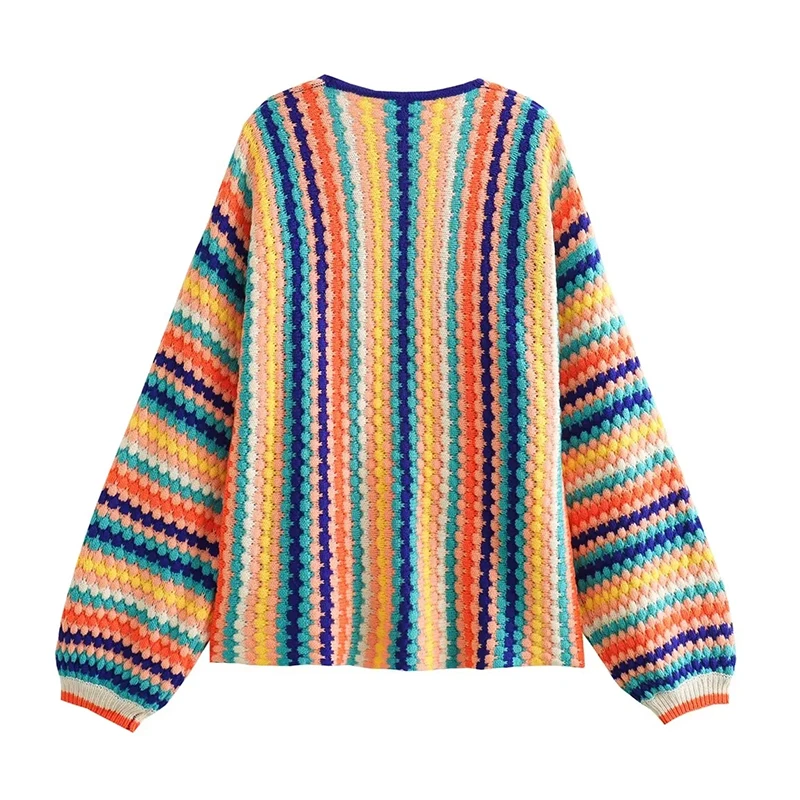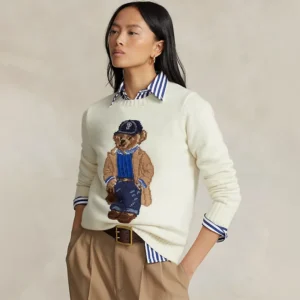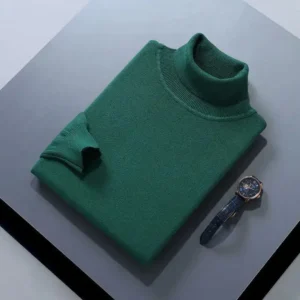Introduction: Decoding Cashmere Fabric Characteristics
When shopping for premium cashmere pieces, understanding the technical aspects behind these luxurious garments can significantly enhance your purchasing decisions. Gauge and knit density are two fundamental characteristics that determine how a cashmere item will look, feel, and perform over time. These factors influence everything from the garment’s warmth and weight to its drape and durability.
The relationship between gauge, knit density, and overall quality directly impacts the price and performance of cashmere pieces. Higher-quality cashmere sweaters often feature specific gauge and density combinations designed to optimize particular wearing experiences. Whether you’re seeking a lightweight summer layer or a substantial winter staple, these technical elements shape your comfort and satisfaction.
For discerning customers, recognizing how these characteristics manifest in the finished product allows for more informed choices based on personal preferences and practical needs. Estate Cloth’s premium cashmere collection exemplifies how these technical specifications translate into exceptional wearing experiences.
In this comprehensive guide, we’ll explore what gauge and knit density mean, how they interact, and their impact on the look, feel, and longevity of your cashmere investments. We’ll also provide practical advice for selecting the ideal specifications for your lifestyle and preferences.
What is Cashmere Gauge? The Foundation of Fabric Structure
Cashmere gauge refers to the number of needles per inch on the knitting machines used to create cashmere fabric. This technical specification forms the foundation of the fabric’s structure and significantly influences its characteristics.
The gauge notation system uses numbers followed by “GG” (which stands for “gauge”). For example:
– 7GG indicates 7 needles per inch
– 12GG indicates 12 needles per inch
– 18GG indicates 18 needles per inch
The higher the gauge number, the finer and more closely spaced the needles on the knitting machine. This creates more stitches per inch of fabric, resulting in a finer, tighter knit structure. Conversely, lower gauge numbers indicate fewer, larger needles that produce bigger stitches and a more open, textured fabric.
In the finished garment, gauge manifests visibly in the size and appearance of individual stitches. Lower gauge cashmere (like 3GG or 7GG) has clearly defined, larger stitches that create a more textured, dimensional surface. Higher gauge cashmere (like 12GG or 18GG) features tiny, tightly packed stitches that create a smoother, more uniform appearance.
Modern knitting machines are engineering marvels, precisely calibrated to maintain consistent gauge throughout production. The selection of appropriate gauge is a critical decision made during the design phase based on the intended characteristics and purpose of the finished garment.
Understanding gauge is essential for appreciating how comprehensive guide cashmere yarn weight affects the final product. The gauge selection establishes the foundation upon which all other fabric properties are built.
What is Knit Density in Cashmere?
While gauge refers to the needle count on knitting machines, knit density describes how tightly those stitches are packed together in the finished fabric. Think of knit density as the compactness or tightness of the fabric structure—how closely the yarn loops are pressed together.
Knit density is related to gauge but represents a different aspect of fabric construction. It’s similar to thread count in woven fabrics, indicating how much yarn is present within a given area. A helpful analogy is comparing fabric to building materials: gauge determines the size of the building blocks, while density determines how tightly those blocks are arranged.
The same gauge can produce fabrics with different densities depending on tension settings during knitting. For instance, a 12GG machine can create a looser fabric if the tension is relaxed, or a denser, more compact fabric if the tension is increased during production.
Manufacturers evaluate knit density through various methods, including measuring weight per unit area and assessing the space between individual stitches. Higher knit density typically results in a firmer, more substantial fabric, while lower density creates a more flexible, drapey texture.
Understanding knit density helps explain why certain cashmere pieces feel more substantial than others, even when they appear similar at first glance. This characteristic significantly influences how your styling tips cashmere cardigans will fall and move with your body, affecting the overall look of your outfits.
The Relationship: How Gauge and Knit Density Work Together
Gauge and knit density share a complex relationship that determines the ultimate character of cashmere fabric. While they’re distinct characteristics, they work together to create the overall fabric structure and performance.
Typically, higher gauge numbers correspond with denser, finer fabrics. An 18GG cashmere knit usually features a tight, compact structure with many small stitches packed closely together. This creates a smooth, refined surface with minimal texture. The resulting fabric tends to be lightweight yet dense, with excellent drape and a sleek appearance.
In contrast, lower gauge numbers generally produce more open, airier structures. A 3GG cashmere knit features fewer, larger stitches per inch, creating a more textured fabric with visible stitch definition. The resulting material is often loftier, with more volume and a more casual, relaxed appearance.
However, these correlations aren’t absolute. Machine settings, yarn characteristics, and finishing processes can create exceptions to these general relationships. For instance, a high-gauge fabric (like 14GG) can be knitted with relaxed tension to create a lighter, more open structure than typically expected. Similarly, a lower gauge fabric can be knitted very tightly to create a denser-than-expected structure.
The engineering behind these relationships involves precise calibration of knitting machine settings, including stitch length, takedown tension, and yarn feed rate. These technical parameters allow manufacturers to fine-tune the relationship between gauge and density to achieve specific fabric characteristics.
For consumers exploring chunky lightweight cashmere layers, understanding this relationship helps explain why some chunky knits feel airy and light despite their substantial appearance, while others feel dense and heavy.
Impact on Fabric Thickness and Weight
Gauge and knit density directly determine a cashmere garment’s thickness and weight, creating significant variations across different products.
Higher gauge fabrics (12GG and above) typically produce thinner, lighter materials. A 16GG cashmere sweater might weigh just 7-9 ounces (200-250g) and measure only 1-2mm thick, making it appropriate for year-round wear or layering. These fine-gauge garments can be so lightweight they’re nearly transparent when held up to light.
Lower gauge fabrics (7GG and below) create thicker, heavier materials. A 5GG chunky cashmere sweater might weigh 14-18 ounces (400-500g) or more and measure 5-7mm thick, providing substantial warmth and presence. These garments have noticeable heft and volume, making them ideal for colder weather.
This inverse relationship between gauge number and fabric weight/thickness is generally consistent, but variations exist. For instance, a tightly knitted 10GG fabric might actually be denser and heavier than a loosely knitted 7GG fabric, despite having a finer appearance.
The season-appropriate nature of different gauges is particularly important when selecting cashmere pieces:
– Lightweight, high-gauge (14-18GG) pieces work well for spring/fall or year-round in moderate climates
– Medium-gauge (10-12GG) provides versatility for three-season wear
– Heavy, low-gauge (3-7GG) options like oversized cashmere sweaters offer maximum warmth for winter conditions
Understanding these characteristics helps consumers select appropriate cashmere weights for their climate and intended use, ensuring comfort across seasons.
Warmth and Insulation Properties
The relationship between cashmere gauge, density, and thermal properties involves some surprising complexities. Contrary to what many assume, tighter isn’t always warmer when it comes to cashmere knits.
Looser, lower-gauge cashmere (like 5-7GG) often provides excellent insulation because the larger stitches trap more air between the fibers. Since trapped air is an excellent insulator, these chunky knits can be remarkably warm despite their open structure. This explains why traditional fisherman sweaters and other chunky knitwear have long been favored for cold-weather protection.
However, dense, fine-gauge knits (like 12-14GG) offer different thermal advantages. While they might contain less trapped air, their tighter construction provides superior wind resistance. This makes them excellent for layering or wearing in windy conditions where air penetration would otherwise compromise warmth.
The inherent properties of cashmere fiber itself—which is approximately eight times warmer than sheep’s wool—means that even fine-gauge cashmere provides exceptional warmth relative to its weight. This allows cashmere transitional weather pieces to offer comfort across temperature fluctuations.
For maximum warmth in extreme cold, garments like cashmere turtlenecks in medium to low gauges (7-10GG) offer an ideal balance: enough density to block wind while maintaining sufficient loft to trap warm air near the body.
The breathability factor is another consideration—higher gauge fabrics typically allow better moisture vapor transmission, making them more comfortable during active wear or in fluctuating temperatures where overheating might otherwise occur.
Drape and Silhouette: The Aesthetic Impact
The gauge and density of cashmere profoundly influence how the fabric moves and shapes itself around the body—what textile experts call “drape.” This characteristic directly affects the garment’s silhouette and overall aesthetic impact.
Higher gauge cashmere (12GG and above) creates fabric with exceptional fluid drape. These finer knits conform gracefully to the body’s contours, creating elegant, smooth silhouettes with subtle movement. The fabric flows and falls in a way that suggests sophistication and refinement. When used in cardigans or pullovers, high-gauge cashmere creates a sleek, polished appearance perfect for professional settings or formal occasions.
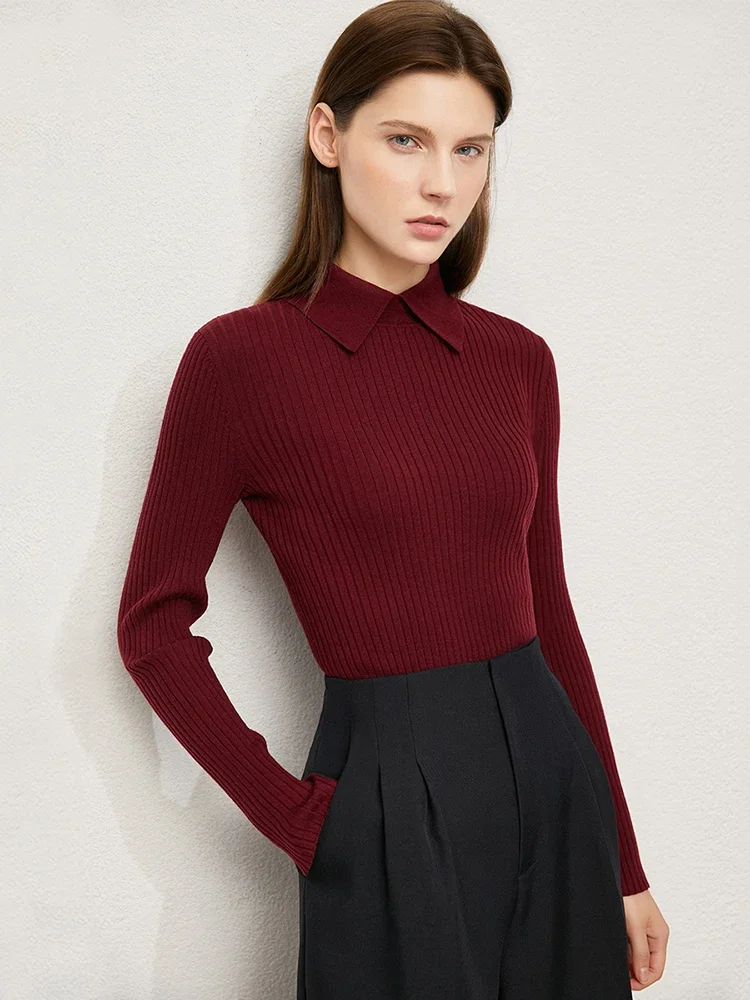
In contrast, lower gauge cashmere (3-7GG) produces fabric with more structure and pronounced texture. These chunky knits hold their shape more definitively, creating more relaxed, dimensional silhouettes with noticeable stitch definition. The visual interest comes from the textural quality rather than fluid movement. When used in sweaters or cardigans, low-gauge cashmere creates a cozy, casual appearance perfect for weekend wear or relaxed settings.
The drape quality significantly impacts how womens cashmere pullovers fit and flatter different body types. Higher gauge pieces with their fluid drape often work well for creating smooth, elongated lines, while medium-gauge pieces can provide a balance of definition and flow. Lower gauge pieces add visual texture and dimension, potentially adding perceived volume.
Design elements like ribbing, cables, and other textural patterns are also directly influenced by gauge selection, as these features require specific gauge ranges to achieve their intended aesthetic effect.
Durability and Pilling Resistance
The relationship between cashmere gauge, density, and long-term performance is particularly important for consumers seeking lasting value from their premium garments.
Generally, tighter knits (higher gauge) demonstrate better pilling resistance than looser knits. This occurs because the compact structure helps secure individual fibers more firmly within the yarn structure, reducing the likelihood of fiber ends working their way to the surface and forming pills. A dense 14GG cashmere sweater typically shows less pilling after repeated wear than a loose 7GG sweater made from the same quality yarn.
Key factors affecting durability across all gauge types include:
- Fiber security: Tighter knit structures hold fibers more securely
- Surface abrasion: Lower gauge fabrics have more pronounced texture, creating more friction points
- Yarn stability: Multiple-ply yarns generally perform better than single-ply regardless of gauge
- Fiber quality: Long fibers (36mm+) with consistent thickness (under 16 microns) resist pilling better at any gauge
However, the most critical factor remains the underlying quality of the cashmere fibers themselves. Even the highest gauge will not compensate for poor-quality short fibers prone to shedding and pilling. This explains why some cashmere products pill extensively despite a fine appearance, while others remain pristine through years of wear.
To maximize durability regardless of gauge, preventing pilling cashmere garments through proper care is essential. This includes gentle washing, avoiding high-friction situations, and regular maintenance with a cashmere comb or stone.
For comprehensive maintenance guidance applicable to all gauge types, the ultimate guide cashmere care washing provides specific techniques to ensure maximum longevity for your investment pieces.
Common Cashmere Gauges and Their Ideal Applications
Different cashmere gauges serve specific purposes, each offering unique advantages for particular garment types and wearing occasions.
Ultra-Fine Gauges (16-18GG)
These exceptionally fine knits create lightweight, almost silk-like fabrics with elegant drape and minimal bulk.
– Characteristics: Extremely smooth surface, subtle luster, fluid movement
– Best uses: Lightweight layering pieces, summer-weight sweaters, fine scarves
– Seasonal fit: Ideal for warm weather or indoor environments
– Style profile: Refined, elegant, minimalist aesthetic
Fine Gauges (12-14GG)
These versatile fine knits balance smoothness with sufficient substance for everyday wear.
– Characteristics: Smooth surface, excellent drape, moderate weight
– Best uses: Year-round sweaters, classic pullovers, lightweight cardigans
– Seasonal fit: Three-season wear (spring, fall, mild winter)
– Style profile: Polished, versatile, business-appropriate
Medium Gauges (7-10GG)
These standard knits provide balanced performance with moderate texture and weight.
– Characteristics: Visible stitch definition, good structure, substantial feel
– Best uses: Everyday sweaters, casual cardigans, versatile knitwear
– Seasonal fit: Cool to cold weather, comfortable indoor wear
– Style profile: Classic, relaxed yet refined
Chunky Gauges (3-5GG)
These substantial knits create textural, dimensional fabrics with pronounced stitch patterns.
– Characteristics: Bold stitch definition, substantial weight, textural interest
– Best uses: Statement sweaters, winter cardigans, cozy loungewear
– Seasonal fit: Cold weather, outdoor activities
– Style profile: Casual, rustic, dramatic
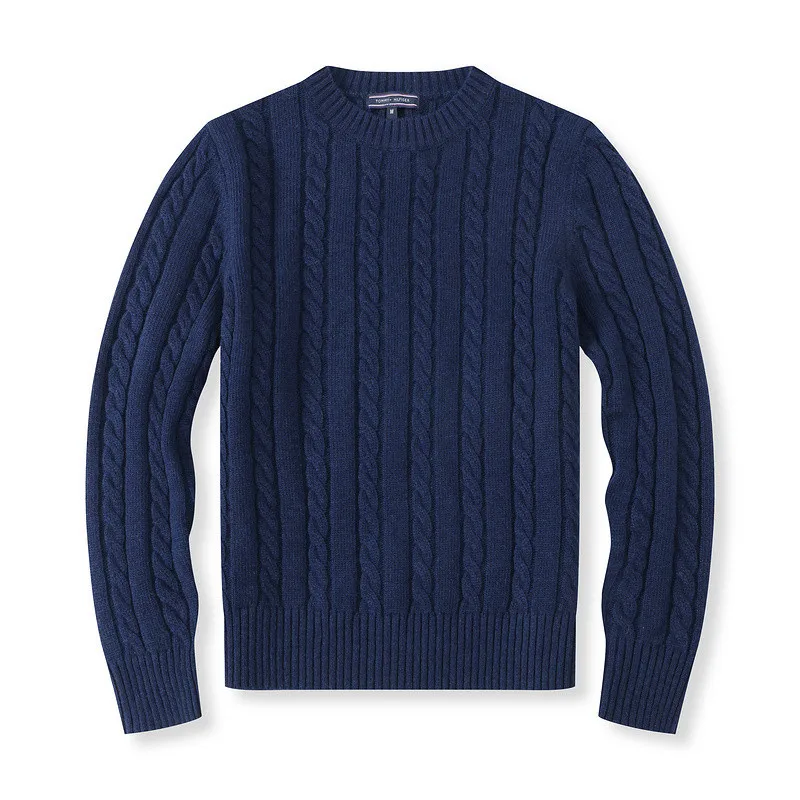
The selection of gauge dramatically impacts design possibilities. For example, intricate cashmere cable knit sweaters require specific medium gauges (typically 7-10GG) to achieve their dimensional patterns while maintaining appropriate fabric stability. Similarly, styling cashmere cardigan versatile looks often involves selecting gauge based on the intended styling approach—finer gauges for professional settings, medium gauges for versatile everyday wear, and chunkier gauges for casual, textural interest.
Body type considerations also influence gauge selection—finer gauges create less visual bulk for petite frames, while medium gauges often provide balanced proportion for average builds. Larger frames can confidently wear chunkier gauges that might overwhelm smaller body types.
Understanding Ply: The Critical Partner to Gauge
While gauge refers to the number of needles per inch in the knitting machine, ply refers to the number of individual yarn strands twisted together to create the yarn used for knitting. This characteristic works alongside gauge to determine cashmere fabric’s overall quality and performance.
Ply directly influences several yarn properties:
– Strength: Higher ply generally means stronger yarn
– Thickness: More plies create thicker yarn (though each individual strand may be fine)
– Durability: Multiple plies typically wear better than single ply
– Surface characteristics: Multiple plies create more rounded, smooth yarns
Common cashmere ply configurations include:
1-ply (single-ply): These yarns consist of a single strand of cashmere fiber. While they can create exceptionally soft, light fabrics with beautiful drape, they’re generally less durable and more prone to pilling. Single-ply yarns are often used in higher gauge knits (14-18GG) for ultra-light summer pieces.
2-ply: This construction twists two strands together, creating a balanced yarn with good strength and refined appearance. Two-ply cashmere represents the most common configuration for quality everyday sweaters, offering a good balance of softness, durability, and drape. It works well across multiple gauge ranges (7-14GG).
4-ply and higher: These substantial yarns twist four or more strands together, creating exceptionally strong, durable constructions. They’re typically used in lower gauge knits (3-7GG) for chunky, textural pieces designed for warmth and longevity. The multiple plies help reduce pilling even in more open knit structures.
Gauge and ply must work together harmoniously—certain ply counts are better suited to specific gauge ranges. For instance, using a thick 4-ply yarn on a fine 16GG machine would be impractical, while a delicate 1-ply yarn wouldn’t provide enough substance on a 3GG machine.
Understanding these specifications helps when exploring the 15 stylish ways wear cashmere cardigans for different occasions, as the ply affects both appearance and performance across different styling approaches.
How to Evaluate Quality: Beyond Gauge and Ply
While gauge and ply provide important information about cashmere fabric construction, they are indicators of characteristics rather than absolute quality markers. Understanding this distinction is crucial for making informed purchases.
The single most important factor in cashmere quality remains the fiber itself—specifically its length and fineness. Premium Grade A cashmere features fibers that are both exceptionally fine (under 16 microns in diameter) and long (exceeding 36mm). These characteristics create the foundation for softness, durability, and pill-resistance regardless of gauge or ply configuration.
Key quality indicators beyond technical specifications include:
Hand feel and softness: Quality cashmere should feel incredibly soft and smooth against the skin without scratchiness. This sensory evaluation often reveals more than specifications alone.
Even color distribution: Premium cashmere accepts dye evenly, creating rich, consistent coloration throughout the garment. Examine garments in good light to check for color variations or streaking.
Seam construction and finishing details: Quality cashmere garments feature clean, flat seams, even stitching, and meticulous attention to details like cuffs, hems, and necklines.
Manufacturing expertise: Brands with established manufacturing processes and comprehensive quality control typically produce superior cashmere regardless of gauge selection. This includes testing for pilling resistance, colorfastness, and dimensional stability.

It’s worth noting that sustainable and ethical production practices often correlate with higher quality as well. Companies investing in responsible sourcing typically maintain higher standards throughout their production chain.
When considering whether are cashmere cardigans worth investment, remember that initial cost often reflects these underlying quality factors rather than just gauge or ply specifications.
Buying Guide: Choosing the Right Gauge for Your Needs
Selecting the ideal cashmere gauge involves matching technical specifications to your specific needs, climate, and personal style preferences.
For warmer climates or indoor-focused lifestyles, higher gauge cashmere (12-18GG) offers several advantages:
– Lightweight comfort without overheating
– Year-round wearability
– Easy layering capability
– Refined appearance suitable for professional settings
For colder climates or outdoor-focused activities, lower gauge options (3-7GG) provide:
– Superior insulation and warmth
– Substantial protection from the elements
– Durable construction for active lifestyles
– Textural interest and casual appeal
When evaluating cashmere products, ask these specific questions:
– What is the gauge and ply count of this garment?
– Where was the cashmere sourced from, and what grade is it?
– What is the average fiber length and diameter?
– How is the garment constructed and finished?
– What specific care does this particular gauge require?
Balance technical specifications with your aesthetic preferences. Some consumers prefer the polished look of fine gauge cashmere despite living in colder climates, while others appreciate the textural interest of lower gauge pieces even in milder conditions. The right choice ultimately depends on your personal priorities.
For those exploring specialty styles like mastering wear long cashmere cardigans, gauge selection significantly impacts how the garment drapes and moves. Similarly, brushed cashmere sweaters create a different tactile experience depending on the underlying gauge of the knit before the brushing process.
Caring for Different Gauge Cashmere
The gauge of your cashmere directly influences its care requirements and longevity potential. Adjusting your maintenance approach based on knit structure helps preserve your investment pieces.
For Delicate High-Gauge Items (12-18GG):
– Hand wash using extra-gentle movements to avoid stretching the fine fabric
– Avoid hanging when wet—the weight of water can distort the delicate structure
– Block carefully on a flat surface to maintain precise dimensions
– Store folded with tissue paper to prevent creasing the fine knit
For Medium-Gauge Everyday Pieces (7-10GG):
– Hand wash or use mesh bags for machine washing on delicate cycles
– Press gently between towels to remove excess water
– Reshape while damp to maintain proper dimensions
– Store folded or lightly rolled to maintain structure
For Substantial Low-Gauge Garments (3-5GG):
– Support the weight of the wet garment during washing to prevent stretching
– Press firmly between towels to remove water from the thicker fabric
– Allow extra drying time due to increased fabric density
– Store flat or folded rather than hanging to maintain shape
Cashmere Wrap Sweaters, Women's Cashmere Pullovers
$75.89 Select options This product has multiple variants. The options may be chosen on the product pageCashmere Cable Knit Sweaters, Women's Cashmere Pullovers
Price range: $111.82 through $112.93 Select options This product has multiple variants. The options may be chosen on the product pageCropped Cashmere Sweaters, Women's Cashmere Pullovers
$155.77 Select options This product has multiple variants. The options may be chosen on the product pageOversized Cashmere Sweaters, Plus Size Cashmere Sweaters, Women's V-Neck Cashmere Sweaters
$136.87 Select options This product has multiple variants. The options may be chosen on the product page- Price range: $108.11 through $130.03 Select options This product has multiple variants. The options may be chosen on the product page
Striped Cashmere Sweaters, Women's Cashmere Pullovers
$139.68 Select options This product has multiple variants. The options may be chosen on the product page
For all cashmere gauges, protection against moths is essential. Cedar blocks, lavender sachets, or other natural repellents help safeguard your investment. Regular, gentle wear actually benefits cashmere across all gauge types, as the natural oils from handling help maintain fiber health.
Those interested in guide styling lightweight cashmere cardigans should note that finer gauge pieces require more careful handling to maintain their elegant drape. Similarly, understanding how to store cashmere properly ultimate guide reveals specific approaches based on knit structure to prevent unwanted creasing or stretching.
FAQ: Common Questions About Cashmere Gauge and Density
Does higher gauge always mean better quality?
No, higher gauge indicates a finer knit structure but doesn’t necessarily reflect better quality. Fiber length, thickness, and processing quality are more important determinants of overall cashmere quality. Both high and low gauge cashmere can be exceptional or poor quality depending on these other factors.
Why does gauge affect price?
Higher gauge cashmere often commands higher prices because finer knitting machines are more specialized, production speeds are slower, and more technical expertise is required. Additionally, higher gauge knits typically use more refined yarn preparations that cost more to produce.
Can I determine gauge by looking at a garment?
With practice, yes. Examine the fabric under good light, looking at the size and number of visible stitch loops. Smaller, more numerous stitches indicate higher gauge. However, finishing processes like brushing can sometimes obscure the underlying gauge, making visual assessment challenging.
How does gauge affect sizing and fit?
Higher gauge fabrics typically have more stretch recovery and a closer fit to the body, while lower gauge fabrics create more structural volume. This means sizing may vary—you might wear a smaller size in chunky knits than in fine-gauge pieces from the same brand.
Is gauge preference purely subjective?
Largely yes. While certain gauges work better for specific applications (like fine gauges for layering pieces), personal preference regarding texture, weight, and appearance should guide your choices. Most consumers develop gauge preferences based on their lifestyle needs and aesthetic preferences.
For those interested in layering techniques, ultimate guide layering cashmere cardigans provides specific insights on how gauge affects layering capabilities. The diverse options in womens cashmere cardigans demonstrate the range of gauge possibilities available in contemporary designs.
Industry Innovations: The Evolution of Cashmere Knitting Technology
Cashmere knitting technology has evolved significantly over recent decades, expanding the possibilities for gauge and density combinations beyond traditional boundaries.
Modern computerized knitting machines now offer unprecedented precision, allowing manufacturers to create complex gauge variations even within a single garment. This technical capability enables innovative design features like graduated density zones—tighter knits in areas needing structure and looser knits where flexibility is desired.
Advanced production techniques have also enhanced traditional methods. While classic fully-fashioned knitting remains the gold standard for quality, computer-controlled machines now replicate many of these techniques with greater consistency and efficiency. This technological progress has made higher quality more accessible across more diverse gauge options.
One of the most significant innovations has been the development of specialized finishing techniques that modify the surface characteristics of different gauge fabrics. Processes like light brushing, steaming, or pressing can transform the appearance and hand feel of cashmere across the gauge spectrum, creating new possibilities for stylish casual cashmere cardigans with unique tactile properties.
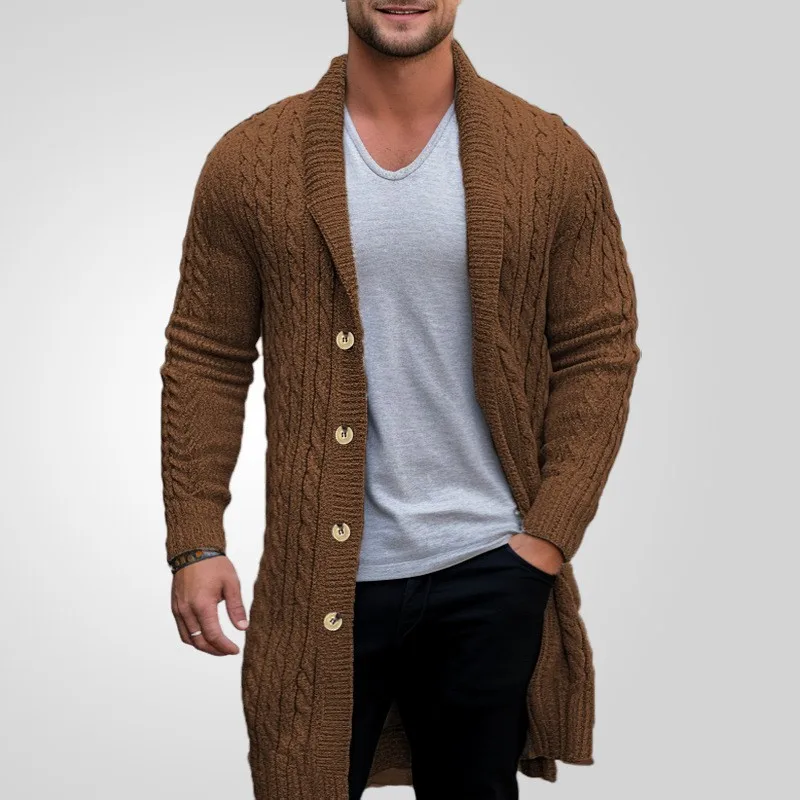
The future of cashmere manufacturing points toward even greater customization capabilities, with developments in yarn engineering and knitting technology allowing for increasingly specialized gauge applications. These innovations continue to expand the versatile outfit ideas cashmere cardigans available to consumers, as well as the versatile cashmere cardigan styles that designers can create.
For discerning consumers, these technological advances translate into more options that combine traditional cashmere luxury with modern performance capabilities, ensuring this timeless fiber remains relevant for contemporary lifestyles.

